By Jaroslaw Adamowski

 Located on the Polish Baltic Sea shore, Gdynia is the country’s third-largest port. Its construction in the 1920s was designed to secure Poland’s access to the sea. Today, even though it is preceded by Gdansk and Szczecin, Gdynia remains a port of strategic importance, with the Polish government aiming to develop its infrastructure and implementing a major modernisation programme for the country’s naval forces, with a large portion of the Polish Navy concentrated in Gdynia.
Located on the Polish Baltic Sea shore, Gdynia is the country’s third-largest port. Its construction in the 1920s was designed to secure Poland’s access to the sea. Today, even though it is preceded by Gdansk and Szczecin, Gdynia remains a port of strategic importance, with the Polish government aiming to develop its infrastructure and implementing a major modernisation programme for the country’s naval forces, with a large portion of the Polish Navy concentrated in Gdynia.
Located in close proximity of Gdańsk, which today is the largest city and port in Poland’s norther region of Pomerania, Gdynia has traditionally served as the country’s main outpost on the Baltic Sea shore. The city is one of the leading forces behind the economy of Poland’s northern Pomerania region, and one of the three components of the Tricity (Trójmiasto) area, together with the neighbouring cities of Gdansk and Sopot. With a population of some 248,000, Gdynia is the region’s second most-populated city, preceded by Gdansk, with more than 460,000 residents. What is noteworthy, is thar Gdynia is also the largest Polish city which is not serving as a capital of one of Poland’s 16 regions.
Pre-War Period: Development Of Port Of Gdynia
Following the First World War, Gdańsk found itself under the mandate of the League of Nations, stuck between Germany and Poland. Although shipments of goods passed through the city, and Gdańsk was integrated into Poland’s customs zone, it did not remain under the control of Polish authorities, and thus the government in Warsaw believed it needed a second port to secure sufficient access to the sea for both commercial and military purposes, Gdynia. The war, which pitted Poland against the Soviet Union in 1920, during which Poland experienced significant difficulties in obtaining deliveries of arms and military equipment through Gdańsk, further convinced Polish decision-makers of the necessity to create a second outpost on the Baltic Sea shore.
The government made an official decision on the construction of a new port in October 1920, and in September 1922, the Polish parliament passed a bill which paved the way for the construction of a new port in Gdynia, located 16 km from the port of Gdańsk. The project would not have been completed if not supported by the Polish military, a major political force in the 1919-1939 period. Vice-Admiral Kazimierz Porebski was one of the leading lobbyists for locating the new port in Gdynia, and his efforts to convince government officials in Warsaw to give a green light to the investment are said to be crucial to the project’s launch.
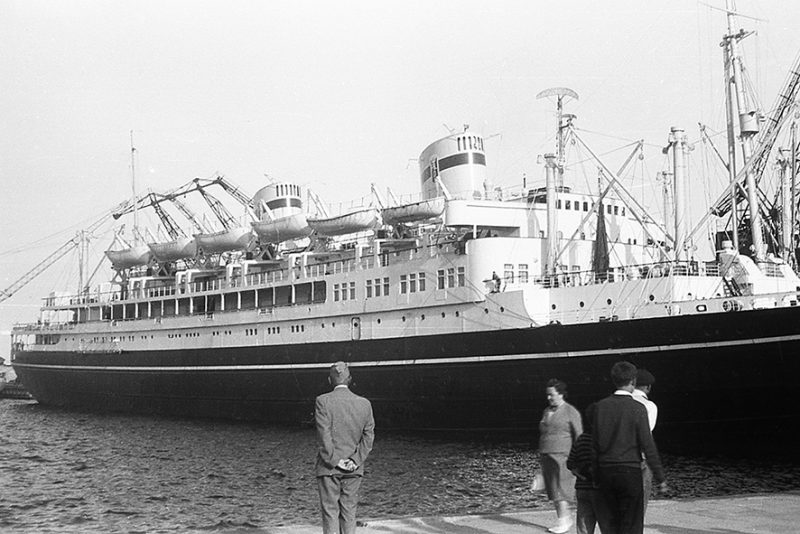
The works on locating and designing the port were led by Polish engineer Tadeusz Apolinary Wenda, who also oversaw the works on constructing and expanding the facility by 1932. At government level, Poland’s Minister of Economy Eugeniusz Kwiatkowski, who held the post in the years 1926 to 1930, was considered as one of the leading political figures who facilitated the construction of the expanded port of Gdynia.
Several months later, in April 1923, the first phase of the investment was completed and officially launched in the presence of Polish president Stanislaw Wojciechowski and Prime Minister Wladyslaw Sikorski, and in August the port welcomed the first foreign ship, the Kentucky. The next phase of the Gdynia-based investment was launched in July 1924 with the signing of an agreement between the Polish government and a French-Polish consortium under which the port was to be significantly expanded. In the next years, the port experienced a period of rapid modernisation and development. In March 1930, in another important step for the port, the first regular passenger line between Gdynia and New York was opened, confirming Gdynia’s role as Poland’s main maritime transport hub.
The military support provided to expanding the port in Gdynia gained further importance in 1926, when, as a result of a coup d’etat, Marshall Józef Piłsudski took power and became Poland’s head of state until his demise in 1935. Porebski and Julian Rummel, Polish engineer and the chief executive of Polish maritime operator Zegluga Morska in the years 1926 to 1932, worked together to convince Piłsudski on the need to develop the port of Gdynia and its key importance to securing Poland’s access to the Baltic Sea.

Reconstruction And Development
In 1945, following the end of the Second World War, Gdańsk became an integral part of Poland. However, with the city’s port largely destroyed, Gdynia remained a strategic hub for Poland’s shipping and naval operations. The revival of the country’s maritime fleet further contributed to Gdynia’s development as, between 1946 and 1952, Poland managed to double its amount of vessels from 26 to 52.
From September 1 to 19, the port served as one of the main military outposts for Poland’s defence against Nazi Germany’s aggression. The port in Gdynia was destroyed owing to military operations, but shipments from the port were launched almost immediately following the end of the war, owing to its swift reconstruction. In July 1945. The first shipment of coal left the port onboard the Suomen Neito and, by the end of the year, 516 other vessels arrived at the port. In total, 563,000 tonnes of cargo were shipped from the Polish port in 1945. The contract to reconstruct its quay and breakwaters was handed to Danish construction company Hojgaard and Schultz, the same company which constructed them in the pre-war period, according to a publication issued on the 90th anniversary of the port. In 1947, a mine-sweeping operation was carried out in the port by the Soviet Navy, and a German military vessel was lifted from underwater.
Following the democratic transformation of 1989 which ended communism in Poland and established a market economy and free elections in the country, the port was also subject to major changes. In 1991, the state-owned port authority was transformed into a company, which was subsequently consolidated into a holding in 1996. The aim was to separate commercial activities from the operational and national security-related responsibilities of the port authority to ensure efficient management.
The port is operated by the Management Board of Port of Gdynia (ZMPG). The company was set up in November 1999 by the municipal authorities of Gdynia and the Polish Treasury, and is state-owned. The company manages the port and related infrastructure.
In another milestone for the port of Gdynia, in May 2003, ZMPG sold a 100 per cent stake in the first state-owned entity of the port to be privatised. The Baltic Container Terminal (BCT) was sold to Philippines-based firm International Container Terminal Services, Inc. (ICTSI). With the acquisition, the firm was awarded a concession to develop, operate and manage the container terminal in Gdynia for a period of 20 years. Set up in 1987 and based in Manila, the company says it is active in the business of acquiring, developing, managing and operating container ports and terminals worldwide.
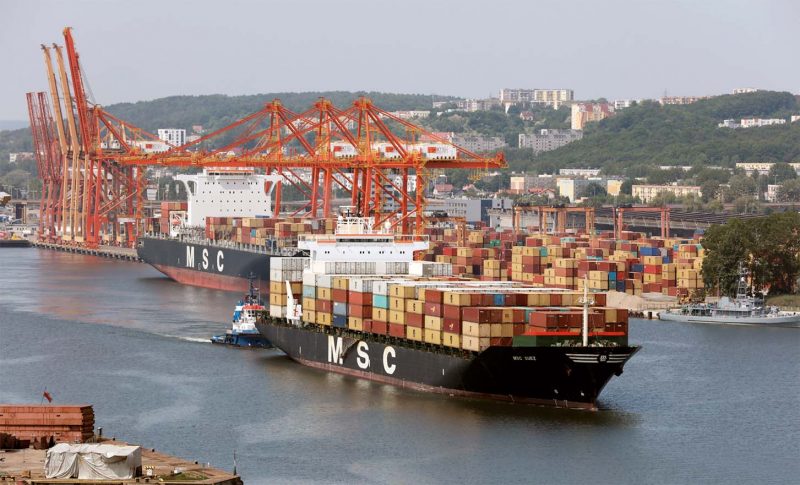
Port Activities On Growth Path
Today, the port’s quay has a total length of 17,700 metres, of which 11,000 metres are intended for handling shipment. It comprises an area of some 7.55 million square metres, including 5.08 million square metres of land.
Containers are handled by two terminals located in the port’s western part. These include the Baltic Container Terminal (BCT), and the Gdynia Container Terminal (GCT).
The port also host a number of mass cargo terminals. These include the Baltic Cereal Terminal (BTZ), Gdynia Sea Mass Terminal (MTMG), Baltic Mass Base (BBM), and Westway Terminal Poland (WTP). In addition to this, the Baltic Bulk Cargo Terminal Gdynia (BTDG) is also located in the port and consists of two facilities: a ro-ro terminal and a conventional bulk cargo terminal, according to data released by the port authorities.
While the port remains state-controlled, some of its entities have been or currently are being privatised. The companies which are now in private hands include the Baltic Container Terminal (BCT), Gdynia Sea Mass Terminal (MTMG) and the Baltic Cereal Terminal (BTZ). The Baltic Bulk Cargo Terminal Gdynia (BTDG) is the latest port-based entity to be sold to private investors, and another mass cargo terminal, the Baltic Mass Base (BBM), has been earmarked for privatisation in the port’s investment strategy. In June 2014, the port sold a 100 per cent stake in the BTDG to local logistics firm OT Logistics. The company paid some PLN 57.8 million (£12 million) for the terminal two years after the port launched efforts to privatise the BTDG.
Set up in 1946 as Polish Shipping on Oder, the firm is headquartered in Szczecin, in northern Poland, and was renamed in 2012. OT Logistics claims it holds an 80 per cent share of the country’s inland water transportation market, and an aggregate 6 per cent stake in the European market. In addition to the terminal in Gdynia, the Szczecin-based firm owns a 95 per cent stake in the Trade Port of Swinoujscie, in Poland’s north-western region of Western Pomerania.
Meanwhile, over the past several years, the port of Gdynia has been posting improved cargo handling results. In 2009, its terminals handled some 13.257 million tonnes of cargo. Four years later, a total of 17.659 million tonnes were handled at Gdynia, which represented a robust increase of 33.2 per cent, compared with 2009. This was achieved despite the fact that the aggregate handled cargo decreased in 2012 to 15.809 million tonnes, down from 15.911 million tonnes a year earlier, according to data released by the port’s operator. The positive results for 2013 accounted for the continuing growth of the port’s economic activities, and suggest that, over a four-year period, Gdynia managed to expand its handling by more than 33 per cent. What is noteworthy is in the years 2009 to 2013, the structure of the handled cargo experienced a number of modifications. In 2009, the port handled 6.757 million tonnes of bulk cargo, which represented close to 51 per cent of the total handled cargo. Four years later, this expanded to 11.053 million tonnes, expanding the share of bulk cargo to about 63 per cent. Meanwhile, fuel cargo has gradually decreased its share in the total from 778,000 tonnes in 2009 to as little as 62,000 tonnes in 2013.
The year 2014 brought another major increase for Gdynia’s cargo handling capacity, with some 19.405 tonnes reported, but the following year, the Polish port handled only 18.198 tonnes of cargo. In 2015, Gdynia reported its record year, with as much as 19.563 tonnes handled by the port.
But perhaps the most significant expansion was reported by the port in the amount of handled TEUs. In 2009, the terminals at Gdynia handled 378,340 TEU. By 2013, this had almost doubled to 729,607 TEU, according to figures from the port authorities. The latest available annual data is for 2016, with 642,195 TEU handled by the port, according to data from the ZMPG.
In 2015, the latest year for which ZPMG published a financial report, the port authorities reported revenues of about PLN 168.3 million (£35 million), which represented a decrease of some 7.9 per cent compared with a year earlier, and a net profit of close to PLN 27.4 million (£5.7 million)
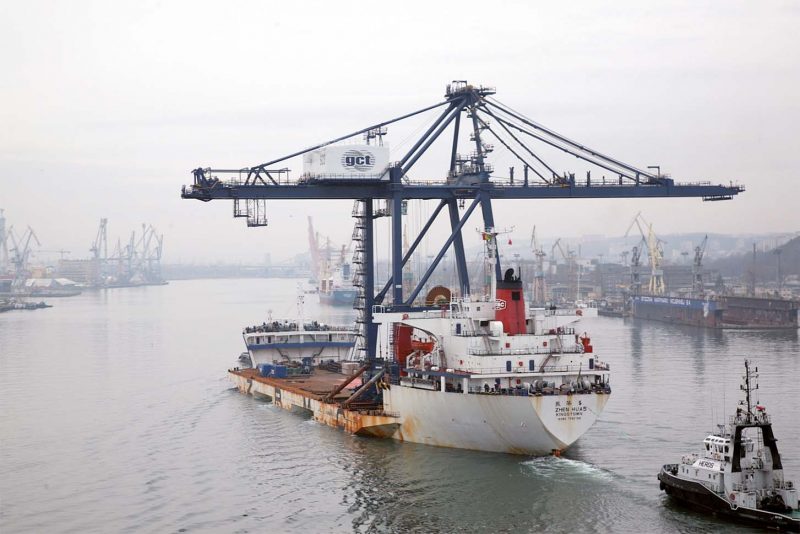

Infrastructural Investments In The Pipeline
In the years 2003 to 2013, the port authorities launched a string of investments to modernise and expand the port which paved the way for its rapid development and current positive results. In total, ZMPG invested about PLN 763 million (£144 million), of which 77 per cent were earmarked for a wide range of infrastructural projects. More than 90 per cent of the investments in Gdynia was covered by the company’s own funds, at some PLN 687 million (£143 million), with the remainder provided by the EU’s Cohesion Fund and the Norwegian Financial Mechanism.
Furthermore, a similar amount, totaling PLN 737 million (£154 million), was provided by further investments in overhauling and modernising the port in the 2014-2016 period, according to the port authorities. This means that, in a two-year period, ZMPG invested almost as much as it did in ten previous years.
Another project was launched to further develop the port’s infrastructure by setting up a new ferry terminal at Gdynia. This will allow the port to diversify its revenue stream, according to company representatives. The new terminal was initially scheduled to be set up by 2017, developed in co-operation with ferry operator Stena Line, which operates the Gdynia-Karlskrona connection between Poland and Sweden on its Stena Spirit vessel. Today, due to its delayed construction, the project is currently expected to be completed by the end of 2019.
“Our aim is to continue the [development of] bulk cargo and container segments, to ensure the port is diversified. Investments in Gdynia are carried out in several directions,” Krzysztof Gromadowski, the director for international co-operation at Port Gdynia, told local news agency Newseria.
“This terminal will be located in close proximity of the entrance to the port,” Gromadowski said. “It will be close to the city centre, benefitting the tourism industry.”
According to Gromadowski, despite the port’s ongoing co-operation with Stena Line, the designed terminal will be also made available to other companies which are potentially interested in launching other connections from Gdynia.
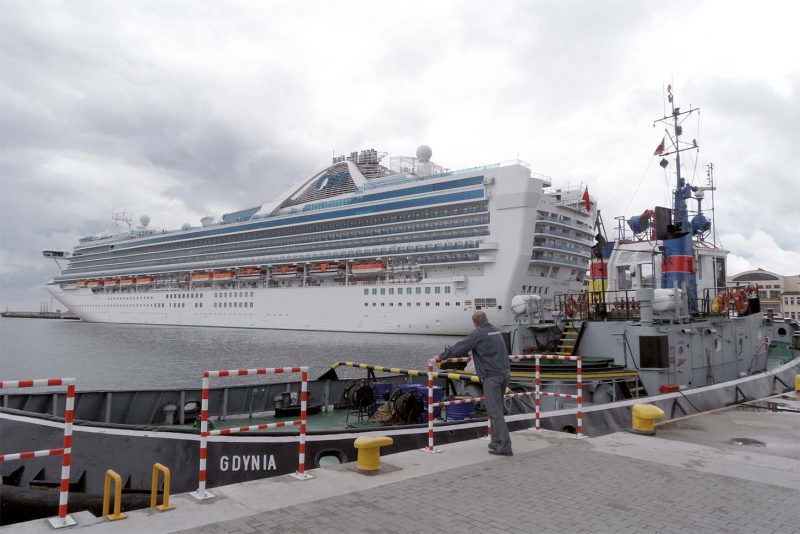
Meanwhile, another major infrastructural will be implemented at the Gdynia Container Terminal (GCT). In August 2014, a consortium formed by Polish construction company Budimex and its Spain-based partner Ferrovial Agroman inked a deal with GCT to carry out construction works as part of the project to develop the terminal’s container capacity. The deal is worth about PLN 40 million (£7.5 million), and the investment was completed by the end of September 2015.
Since 2005, the GCT has been operated by Hong Kong-based firm Hutchinson Port Holdings, whose network of port operations comprises 319 berths in 52 ports, spanning some 26 countries throughout Asia, the Middle East, Africa, Europe, the Americas and Australasia. The company acquired the Polish terminal one year following Poland’s accession to the European Union, owing to which the country “has been experiencing greatly increased trade flows and has reported significant container growth,” according to Hutchinson Port Holdings.
“These developments have facilitated GCT’s transition into the region’s premier port of call,” the firm says. “Gdynia Container Terminal (GCT) is a full-service container and heavy-lift handling facility which serves as a feeder port connecting Poland with hubs in Bremerhaven, Hamburg and Rotterdam as well as a load centre for intra-Europe short-sea cargoes.”
The company says it is further expanding the terminal to “enhance its competitiveness to be the port of call in the Baltic region for many shipping lines.”
ZPMG says that an additional element contributing to the investment potential of the new logistics distribution centre is the location of the Port of Gdynia near two airports, the Lech Walesa International Airport in Gdańsk Rębiechowo, and Gdynia Kosakowo Airport.
Another major investment was completed in 2015. ZPMG awarded a deal to the local subsidiary of construction company Strabag to carry out construction works at the port to overhaul the Romanian quay. The deal, awarded through a tender, had a net worth of about PLN 45 million (£9.4 million). Strabag deepened the quay to 13.5 metres, enabling the port to accommodate larger ships and increase its handling capacity. Due to its strategic importance, the Gdynia-based project was added to the EU’s Infrastructure and Environment programme for the 2007-2013 period, the port said.
In addition to this, the EU is co-financing a number of key investments at the port. These include the expansion of the road and railway access to the port’s eastern part, the development of the port’s infrastructure for servicing Ro-Ro vessels, the reconstruction of the Swedish and Bulgarian quay areas, the reconstruction of the port’s channel, as well as the reconstruction of the intermodal rail terminal.
Other initiatives by ZMPG comprise upgrading the port’s rail infrastructure. In May 2014, Poland’s railway infrastructure operator PKP PLK, with whom ZMPG is partnering on the investment, awarded a contract to consultancy firm WYG International to develop a feasibility study of the project to modernise the port’s main rail station. The project will allow works on overhauling the port’s rail infrastructure, consisting of more than 160 km of rail track and 400 rail junctions on a site of some 700,000 square metres, according to data released by ZMPG.
At the time of the project’s launching, the necessity to modernise the port’s rail infrastructure is emphasised by company representatives who say that, in order to attract further investors, the port must comply with the most modern standards of intermodal freight transport.
“It is impossible to overestimate the importance of this project,” said Walery Tankiewicz, the deputy chief executive and director for infrastructure and asset management at ZMPG. The port’s rail infrastructure “does not correspond to the modern and future requirements of … intermodal freight transport.”
“Ensuring effective access to rail transport for our port is not only a prerequisite for its further development, but also results from Poland’s obligations related to the EU regulations on transport,” Tankiewicz said.
Furthermore, the planned infrastructural investments are part of Poland’s larger strategy of upgrading its national transportation capacities and enhancing its maritime transport capabilities.
Regional Challenges
Celebrating its 95th anniversary in 2017, the port of Gdynia has seen its handling capacity rise from some 10,000 in 1924 to as much as 19,563 tonnes in 2016. The latter figure represented an increase of 7.5 per cent compared with the 18,198 tonnes reported a year earlier.
With the port aiming to strengthen its position as a regional hub on the Polish Baltic Sea shore, the foremost challenges to its ongoing expansion are posed by ports in neighbouring countries. These include Russia’s port of Kaliningrad, the country’s enclave on the Baltic Sea located between Poland and Lithuania, and plans to expand it by the Russian government.
This year, Moscow unveiled plans to build two new terminals in Kaliningrad in the next two years, enabling the port to significantly bolster its handling capacity. The planned investment is estimated to be worth about RUB 9 billion (£124 million). Under the plan, the terminals will be built under a federal program aimed to boost Russia’s transportation infrastructure by 2020.
The project will be implemented in two phases. The first phase includes the construction of an international passenger port, and the second one will see the construction of a deep-sea freight port in proximity of Kaliningrad, according to the information released by the Russian government.
As a result, local observers say that the port of Gdynia’s further expansion plans, while ambitious and far-reaching, could also be leveraged on its capacity to effectively compete against the emerging market competitors in the east.
With this in mind, an efficient co-operation between the port authorities in Gdynia and the country’s government could be crucial for the port’s future. In a sign of the increased emphasis put by Poland’s decision-makers on the development of local port infrastructure, the country’s authorities aim to invest in upgrading and modernising the country’s ports, including the port of Gdynia, in the forthcoming years.
Meanwhile, the port authorities said that 42 large passenger ships were expected at the port in the spring and summer of 2017. The passenger ship season was inaugurated on 14 May 2017, when MSC Magnifica, a cruise ship with a length of close to 294 metres, flying the flag of Panama, docked at the French quay of the Polish port.

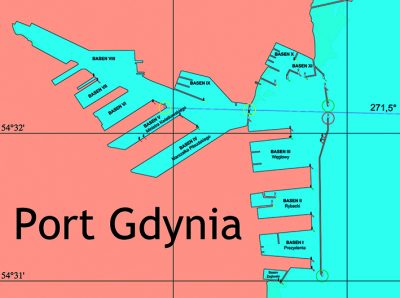
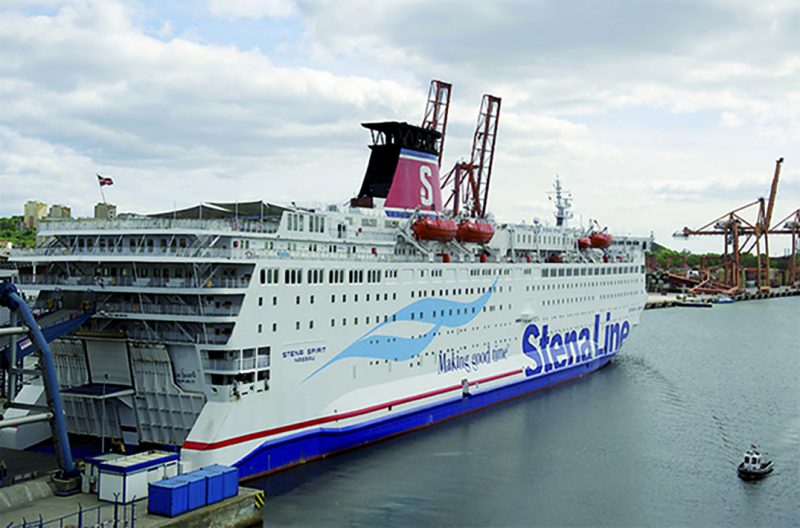
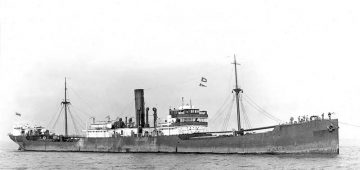



Comments
Sorry, comments are closed for this item